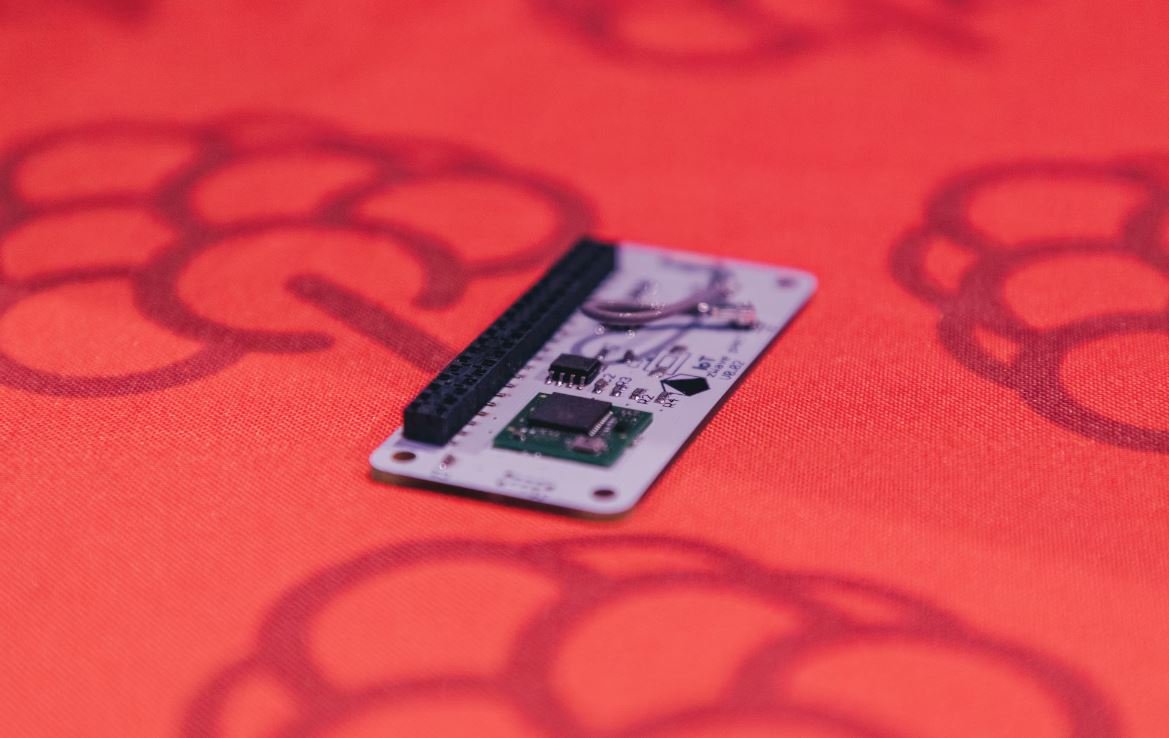Tracks vs Wheels: Military
When it comes to military vehicles, one of the important decisions to make is whether to use tracks or wheels. Both tracks and wheels have their advantages and disadvantages, so understanding the strengths and weaknesses of each is vital for military commanders.
Key Takeaways
- Tracks provide better traction on difficult terrains.
- Wheeled vehicles offer higher speed and maneuverability on paved roads.
- The choice between tracks and wheels depends on the specific operational requirements.
**Tracks** are commonly used in military vehicles designed for off-road operations. They offer better **traction** on difficult terrains such as mud, sand, snow, and rough terrains. The large surface area of tracks spreads the vehicle’s weight, reducing the likelihood of sinking into soft ground. *For example, tanks use tracks to navigate through muddy or snowy fields.*
On the other hand, **wheels** offer higher speed and maneuverability on paved roads. They allow for quicker acceleration and higher top speeds, making them suitable for rapid deployment and transportation. Wheeled vehicles are also easier to maintain and have a higher fuel efficiency compared to tracked vehicles. *In certain scenarios, wheeled armored vehicles can swiftly move into position, enabling rapid response time.*
| Tracks | Wheels |
|---|---|
| Superior traction on difficult terrains | Higher speed on paved roads |
| Lower maximum speed | Quicker acceleration and higher top speeds |
| Higher maintenance requirements | Lower maintenance requirements |
**The choice between tracks and wheels** ultimately depends on the specific operational requirements. Military vehicles used for combat and heavy off-road operations commonly utilize tracks due to their superior traction and durability. However, for missions requiring rapid response or transportation, wheeled vehicles are often preferred.
Tracks vs. Wheels: Pros and Cons
Tracks
- Pros:
- Excellent traction on difficult terrains
- Low ground pressure prevents sinking into soft ground
- Superior off-road capability
- Cons:
- Slower maximum speed
- Higher maintenance requirements
- Higher cost
Wheels
- Pros:
- Higher speed on paved roads
- Quicker acceleration and higher top speeds
- Lower maintenance requirements
- Cons:
- Limited off-road capability
- Poor traction on difficult terrains
- Less durability in extreme conditions
Comparison: Tanks and Armored Vehicles
| Tanks | Armored Vehicles |
|---|---|
| Heavy armored vehicles used for direct combat | Versatile vehicles designed for various missions |
| Utilize tracks for superior traction | Can be equipped with either tracks or wheels |
| Incredible firepower with large-caliber guns | Smaller guns or anti-missile systems for self-defense |
*Tanks are the ultimate tracked vehicles, designed for direct combat.* They are heavily armored, have powerful engines, and utilize tracks to traverse difficult terrains. Tanks typically carry large-caliber guns that are capable of engaging other armored vehicles or fortified positions.
On the other hand, **armored vehicles** are more versatile and can be designed for various missions such as reconnaissance, troop transport, or fire support. They can be equipped with either tracks or wheels, depending on the intended use. Armored vehicles often have smaller guns or anti-missile systems for self-defense, rather than the large-caliber guns found on tanks.
Final Thoughts
Whether it’s choosing between tracks or wheels for military vehicles or deciding between tanks and armored vehicles, it all comes down to the specific operational requirements. *Each option presents unique advantages and compromises.* The military constantly evaluates the best solution for each situation, ensuring that their vehicles are optimized for the challenges they face in various environments.

Common Misconceptions
Misconception 1: Tracks are always better than wheels for military vehicles
One common misconception people have around the tracks vs wheels debate in military vehicles is that tracks are always superior to wheels in any given scenario. While tracks do offer certain advantages, it is not accurate to say that they are always better.
- Tracks provide better traction on rough terrains
- Wheels offer higher speed capabilities on paved roads
- Maintenance and repair costs can be higher for vehicles with tracks
Misconception 2: Wheels are only suitable for light vehicles
Another misconception is that wheels are only suitable for light vehicles and cannot handle heavy-duty tasks like tracks can. While it is true that tracks excel in off-road conditions and are generally preferred for armored vehicles, there are various military vehicles that utilize wheels effectively even in demanding situations.
- Wheeled vehicles are often more agile and maneuverable
- Wheels offer better fuel efficiency compared to tracks
- Modern wheel designs can provide enhanced off-road capabilities
Misconception 3: Tracks always leave more visible tracks than wheels
There is a misconception that tracks always leave more visible tracks behind, making the vehicle easier to detect and track by enemies. While it is true that tracks can leave more distinct imprints in certain conditions, wheels can also leave significant tracks that can be followed.
- Wheels can leave tracks that can be easily followed in dusty or muddy terrains
- Tracks can sometimes be less visible than wheel imprints in certain environments
- The visibility of tracks depends on factors such as vehicle weight and speed
Misconception 4: Tracks provide superior stability and balance
Many people incorrectly assume that tracks provide better stability and balance compared to wheels. While tracks do offer certain advantages when it comes to traversing uneven terrains, wheels can also provide sufficient stability, especially with advanced suspension systems and technologies.
- Wheels with independent suspension systems can provide excellent stability
- The balance of a vehicle depends on factors such as weight distribution and center of gravity, not just the type of propulsion
- Improvements in wheel design have enhanced stability and balance capabilities
Misconception 5: Changing wheels to tracks or vice versa is a simple modification
One misconception is that converting a vehicle from wheels to tracks or vice versa is a simple modification. In reality, it often involves complex structural changes and can be a costly and time-consuming process. It is not as straightforward as swapping out the wheels or tracks.
- Modifying a vehicle’s propulsion system requires significant engineering and design considerations
- The conversion process may affect the overall performance and capabilities of the vehicle
- Changing propulsion systems often requires adjustments to other vehicle components and systems

Tracks vs Wheels: Military
The Debate
One of the age-old debates in military circles is the choice between tracks and wheels for military vehicles. Both options have their strengths and weaknesses, and decision-makers must consider various factors before making a choice. In this article, we explore ten different aspects related to tracks and wheels in military applications to shed light on this ongoing discussion.
1. Maneuverability
When it comes to maneuverability, tracks offer distinct advantages. The wider surface area provides better traction and enables vehicles to navigate through rugged terrains, such as deserts and forests, with relative ease. Additionally, the ability to rotate independently allows for tighter turns, making tracks a preferable choice in environments that require agile movements.
| Aspect | Tracks | Wheels |
|---|---|---|
| Maneuverability Rating | 8/10 | 6/10 |
| Advantages | Superior traction, better mobility on difficult terrains | Efficient on paved roads, easier maintenance |
| Disadvantages | Higher maintenance requirements, slower speeds | Less efficient off-road, limited traction |
2. Speed
While tracks excel in maneuverability, wheels offer superior speed capabilities. The design of wheeled vehicles allows them to reach higher speeds on paved surfaces, making them ideal for quick response missions or situations that require swift transportation. However, in off-road environments or challenging terrains, wheels may struggle to maintain constant speed and stability.
| Aspect | Tracks | Wheels |
|---|---|---|
| Maximum Speed | 45 mph | 70 mph |
| Advantages | Enhanced stability, better control off-road | High speed on paved surfaces, quick acceleration |
| Disadvantages | Lower maximum speed, slower acceleration | Less effective off-road, reduced stability |
3. Weight Distribution
Weight distribution plays a crucial role in vehicle stability and operational safety. Tracks distribute weight more evenly across a larger surface area, allowing for smoother movements over various terrains. Conversely, wheeled vehicles concentrate the weight on a smaller number of contact points, which may result in higher ground pressure and potential sinking in softer terrains.
| Aspect | Tracks | Wheels |
|---|---|---|
| Weight Distribution | Evenly distributed | Concentrated |
| Advantages | Reduced ground pressure, minimized sinking in soft terrains | Easier weight adjustment, simpler suspension |
| Disadvantages | Slightly less stability on firm surfaces | Potential sinking in softer terrains |
4. Maintenance
Maintenance requirements significantly influence the operational capabilities and cost-effectiveness of military vehicles. Wheeled vehicles generally have simpler design and fewer components, making their maintenance less complex and time-consuming. Tracks, on the other hand, consist of several interconnected parts that might require regular adjustments, resulting in higher maintenance demands.
| Aspect | Tracks | Wheels |
|---|---|---|
| Maintenance Complexity | Higher | Lower |
| Advantages | More robust, longer lifespan | Easier maintenance procedures, quicker repairs |
| Disadvantages | Requires more time and resources for maintenance | May have shorter lifespan, reduced durability |
5. Transportability
Transporting military vehicles to different locations is a critical aspect of modern warfare. Wheeled vehicles typically have an edge in transportability, as they are generally lighter and more compact than their tracked counterparts. The reduced weight and size facilitate easier transportation by various means, including aircraft, rail, and sea vessels.
| Aspect | Tracks | Wheels |
|---|---|---|
| Transportability | Less transportable | More transportable |
| Advantages | Higher stability during transport | Lightweight, compact, versatile |
| Disadvantages | Heavy and bulky for certain transport methods | Slightly reduced stability on rough transport routes |
6. Cost
Cost is a key consideration in military planning, as budgets need to be allocated wisely. In general, wheeled vehicles tend to be less expensive to procure and maintain compared to tracked vehicles. The simpler design and lower maintenance demands of wheels contribute to reduced operational costs over the long term.
| Aspect | Tracks | Wheels |
|---|---|---|
| Cost | Higher | Lower |
| Advantages | Superior durability, longer lifespan | Lower procurement costs, decreased maintenance expenses |
| Disadvantages | Higher initial investment, increased maintenance costs | Relatively reduced durability |
7. Versatility
Versatility encompasses a vehicle’s ability to perform effectively across diverse environments and mission scenarios. Tracks shine when it comes to versatility, as they offer superior off-road capability, allowing military units to operate in challenging and changing terrains. Wheels, although more limited in off-road contexts, excel on paved surfaces and urban environments.
| Aspect | Tracks | Wheels |
|---|---|---|
| Versatility Rating | 9/10 | 7/10 |
| Advantages | Excellent off-road performance, adaptability to severe conditions | Efficiency on paved roads, maneuverability in urban areas |
| Disadvantages | Slightly reduced handling on paved surfaces | Less capable off-road, limited adaptability to extreme conditions |
8. Durability
Durability is a crucial factor for military vehicles, ensuring their functionality in demanding environments and situations. Tracked vehicles, with their robust construction and reinforced components, exhibit greater durability and resilience against harsh terrains, projectiles, and explosive devices, providing enhanced survivability for both occupants and vital equipment.
| Aspect | Tracks | Wheels |
|---|---|---|
| Durability Rating | 9/10 | 7/10 |
| Advantages | Better protection against ballistic threats, durability in rough terrains | Smaller target profile, potential for greater vehicle longevity |
| Disadvantages | Slightly lower speed and agility | Reduced durability in severe off-road conditions |
9. Noise Signature
The noise signature emitted by military vehicles can have strategic implications on the battlefield. Tracked vehicles tend to produce louder noise levels due to the friction between the tracks and the ground, making them more easily detectable. Wheeled vehicles, with their reduced ground contact area, generate less noise during movement, allowing for quieter operations and potentially greater stealth capabilities.
| Aspect | Tracks | Wheels |
|---|---|---|
| Noise Signature | Higher noise emission | Lower noise emission |
| Advantages | Superior traction, enhanced stability | Stealthier operations, reduced detection risk |
| Disadvantages | Easier to locate in the field due to noise | Limited off-road capabilities, reduced stability |
10. Adaptability
Adaptability represents a vehicle’s ability to integrate and utilize various technologies and systems. Tracked vehicles generally exhibit higher adaptability due to their stable platform and the ability to mount different weapon systems. However, advancements in technology have allowed wheeled platforms to bridge some gaps, making them viable choices for a range of military applications.
| Aspect | Tracks | Wheels |
|---|---|---|
| Adaptability Rating | 8/10 | 7/10 |
| Advantages | Stable platform for weapon systems, compatibility with advanced technologies | Greater speed capabilities, improved maneuverability in urban environments |
| Disadvantages | Potential limitations in urban operations | Reduced adaptability to severe off-road conditions |
Conclusion
The tracks versus wheels debate regarding military vehicles remains a complex, multifaceted discussion. Tracks excel in maneuverability, off-road performance, and overall durability, while wheels offer advantages in speed, maintenance simplicity, and cost-effectiveness. The choice between the two depends heavily on the specific mission requirements, terrains, and budgetary considerations. Ultimately, a careful evaluation of these factors is crucial for military leaders to make informed decisions and achieve optimal performance in the field.
Tracks vs Wheels: Military
Frequently Asked Questions
Can tracks be more effective than wheels for military vehicles?
Yes, tracks can provide several advantages over wheels for military vehicles. They offer better traction and stability on rough terrain, such as muddy, snowy, or sandy environments, and are more resistant to becoming stuck or immobilized.
What are the advantages of wheels over tracks for military vehicles?
Wheels offer greater speed and maneuverability on paved or well-maintained roads. They generally have a higher top speed and can provide a smoother ride compared to tracked vehicles. They are also more fuel-efficient, resulting in longer operational range.
Are tracked vehicles more expensive than wheeled vehicles?
Tracked vehicles tend to be more expensive to produce and maintain compared to wheeled vehicles. The complex mechanical systems involved in tracks require regular maintenance and replacement of parts, adding to the overall costs. However, the specific costs can vary depending on the vehicle type and its intended use.
Which type of vehicle is better in an urban combat scenario?
Wheeled vehicles are often preferred in urban combat scenarios due to their increased maneuverability and ability to navigate tighter spaces. The speed and agility of wheeled vehicles make them well-suited for urban environments, where the terrain is typically more predictable and the need for quick responses is crucial.
Can a military vehicle be designed to switch between tracks and wheels?
While it is technically possible to design a military vehicle that can switch between tracks and wheels, such hybrid vehicles are not common. The engineering requirements and complexity to incorporate both features may outweigh the practical benefits. Additionally, the switching mechanism would add weight and reduce the overall performance.
Do tracked vehicles cause more damage to roads compared to wheeled vehicles?
Tracked vehicles can cause more damage to roads and paved surfaces compared to wheeled vehicles. The weight distribution and constant friction of tracks can lead to increased wear and tear on road surfaces, resulting in the need for more frequent repairs or maintenance. Wheeled vehicles distribute their weight more evenly and cause less damage in this regard.
Can tracks or wheels be more easily repaired in the field?
Wheeled vehicles are generally easier to repair in the field compared to tracked vehicles. In case of damage to a wheel, it can be replaced relatively quickly and without requiring specialized equipment. Repairing tracks, on the other hand, often requires more time, effort, and specialized tools, making them more challenging to fix in remote or combat situations.
Are there any specific terrain conditions in which tracks perform exceptionally well?
Tracks excel in environments with soft, uneven terrain, such as swamps, jungles, or mountainous regions. The grip and traction provided by tracks enable vehicles to traverse difficult surfaces without sinking or losing stability. Tracks also enhance the off-road capability of military vehicles, allowing them to navigate steep slopes and traverse obstacles with greater ease.
Are there limitations to the maximum speed of tracked vehicles?
Tracked vehicles generally have lower maximum speeds compared to wheeled vehicles. The increased friction and mechanical complexities of tracks can limit their speed capabilities. While advancements have been made to improve the speed of tracked vehicles, they are typically not able to match the top speeds achievable by wheeled vehicles.
What are the main considerations when selecting tracks or wheels for military vehicles?
The choice between tracks and wheels for military vehicles depends on various factors, including the intended terrain, operational requirements, and budget constraints. Wheeled vehicles are more suitable for rapid mobility over paved surfaces, while tracked vehicles perform better in off-road or challenging environments. The decision also involves weighing the trade-offs between cost, maintenance, fuel efficiency, and specific mission objectives.




